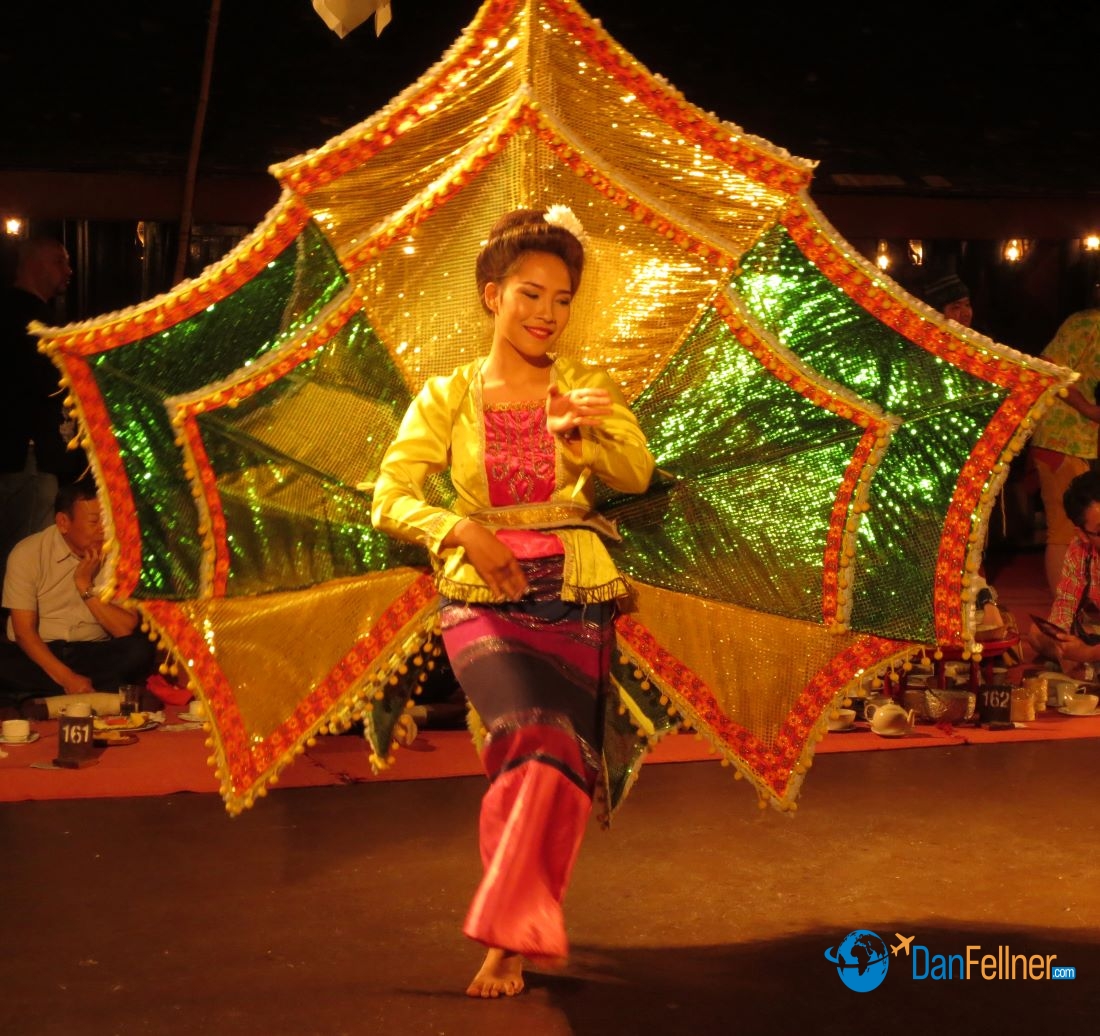Northern Thai city popular retirement spot for American expats
The Arizona Republic — February 7, 2016
CHIANG MAI, Thailand – This popular tourist destination and hub of northern Thailand in the rolling foothills of the Himalayan Mountains is undoubtedly a nice place to visit.

One of the many elephant parks near Chiang Mai, Thailand.
But would you really want to live here?
More than 10,000 Americans – about 30 percent of whom are retired — have answered that question affirmatively. Having fallen in love with Chiang Mai myself three years ago during a short visit, I’m now asking that question of myself, spending three months here this winter as I take the semester off from teaching and transition toward semi-retirement.
I’m considering the experience a Thai-living test-drive.
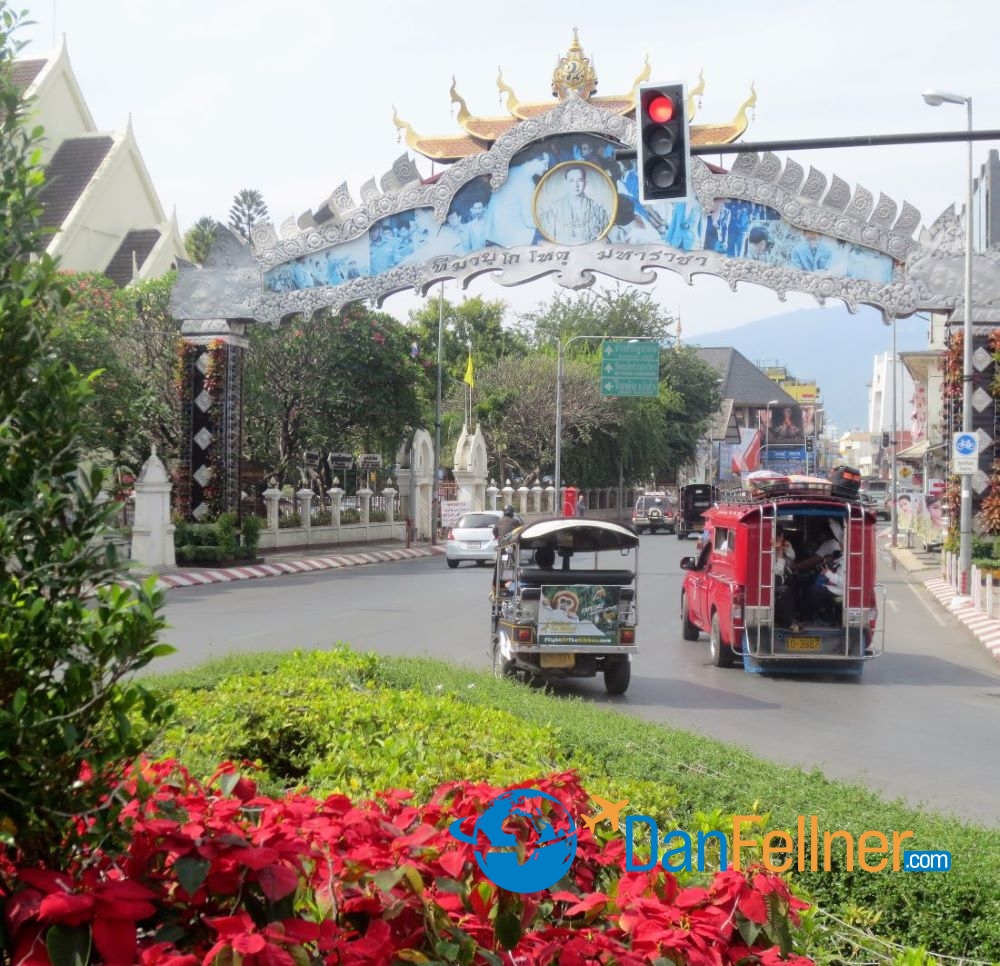
A tuk-tuk and songthaew head into downtown Chiang Mai.
Like thousands of other expats who have decided to spend their golden years here, I’m attracted by the tropical climate, low cost of living, and surprisingly high-quality health care. It’s for precisely these reasons that Forbes magazine last year ranked Chiang Mai fourth on its list of “The 7 Best Places to Retire Around the World.”
Add to the list a fascinating culture with much to see and do, a vibrant expat community, friendly and hospitable locals, amazing food and low street crime, and it’s easy to see why so many foreigners are moving to the city Thais refer to as “the Rose of the North.”
With nearly a million residents in its metropolitan area, Chiang Mai is Thailand’s fifth-largest city. It’s about 470 miles – a 45-minute plane ride – north of Bangkok, the country’s capital and largest city. Chiang Mai is cooler than Bangkok, and much less frenetic, congested and polluted.

Children in a northern Thailand hill-tribe village.
The city’s name, pronounced Chang My, means “new city” in Thai, so named because it became the capital of the Kingdom of Lanna in 1296, the year Chiang Mai was founded. Its historic old city, surrounded by a moat and the remnants of a wall, is home to more than 30 Buddhist temples, many of which date back centuries and are architecturally stunning.
Winter weather in northern Thailand is glorious. Highs most days have been in the upper 80s, but it cools off nicely at night. Rain this time of year is scarce.
Since I arrived in Chiang Mai a month ago, I’ve ridden an elephant through the Thai jungle at one of the many nearby elephant parks, sampled fried silkworms, and figured out how to get around town on motorized rickshaws known as tuk-tuks and ubiquitous red pickup trucks called songthaews (the Thai version of a mini-bus).

Thai street-food is world-renowned.
I’ve wandered through remote hill-tribe villages, and reached the highest peak in the country at Doi Inthanon National Park (8,415 feet). I’ve attended cultural performances and witnessed the beautiful simplicity of Thai dancing (to see a video clip I shot of Thai dancing at the Chiang Mai Cultural Center, click on this link: Thai dancing.) And I feel like I’ve barely scratched the surface.
I’m having little difficulty keeping within my budget of about $1,200 a month. I’m staying at a 15-room boutique hotel called Vanilla Place Guesthouse, just a five-minute walk from Chiang Mai’s famous Night Bazaar. Once here, I was able to negotiate with the owner a long-term rate of 700 Thai baht per night (about $19.50), including breakfast.

Wachirathan Waterfall at Doi Inthanon National Park in northern Thailand.
The hotel is clean, quiet and has high-speed Internet, enabling me to stream my favorite TV shows from back home. I could have rented a condominium for $200 a month cheaper, but wanted to be located in the heart of the city. Plus, it’s nice not having to make my bed, clean my room, fix breakfast, or buy toilet paper or soap. I pay an extra $3 a week to have my laundry done.
As for food, I have yet to tire of the always flavorful – and often spicy – dishes of pad Thai noodles, hot-and-sour soup called tom yam, and curry with chicken and peanuts, a northern Thai specialty. I usually wash it down with a mango shake or a Chang beer. A nice dinner out costs about $8.
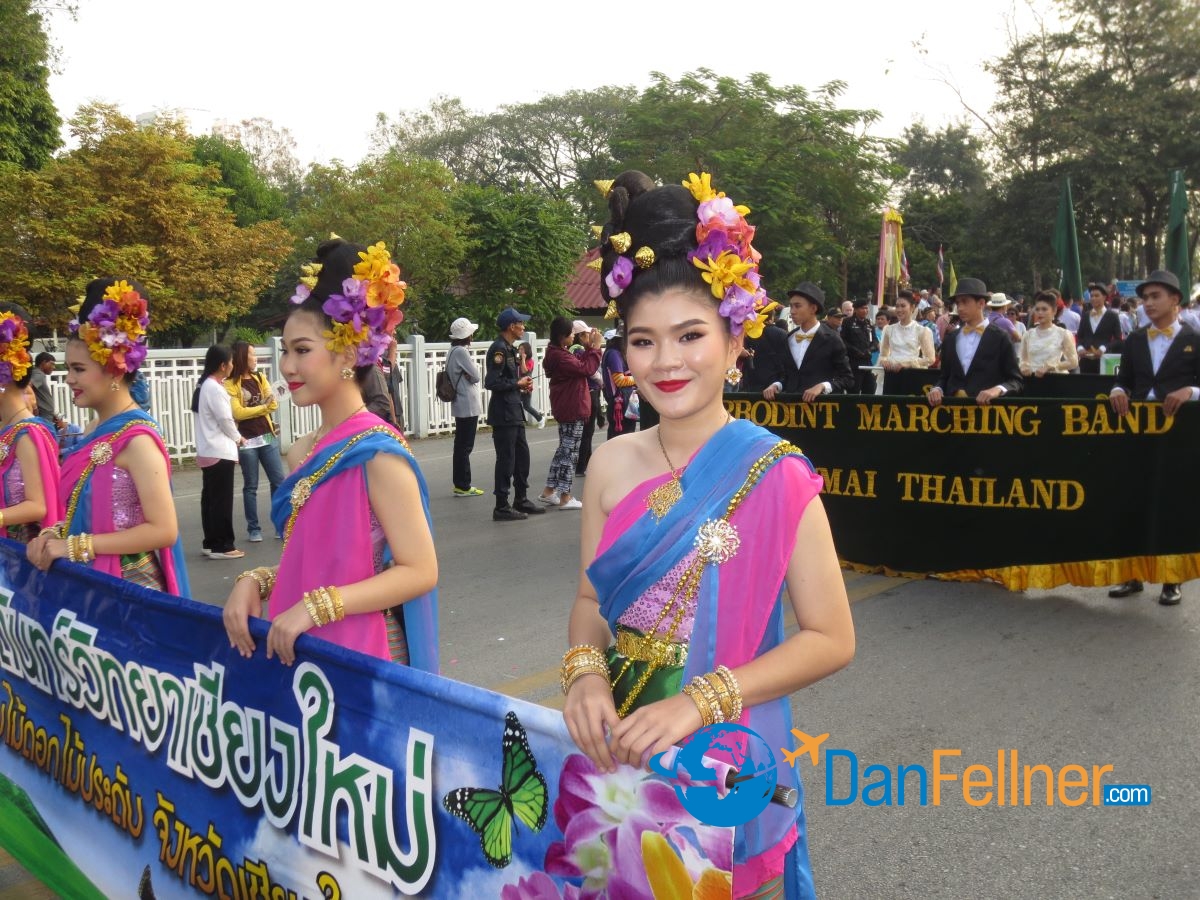
A parade in downtown Chiang Mai, Thailand.
If you really want to eat cheap, Thai street food is world-renowned. Once or twice a week I’ll enjoy a plate of freshly stir-fried rice or noodles with chicken or pork, followed by a dessert of banana rotee smothered in chocolate, similar to French crepes but much cheaper. A main course and dessert prepared by Chiang Mai street vendors costs 90 baht (about $2.50). Watching the food being cooked is almost as much fun as eating it.
My one extravagance is getting Thai foot massages several times a week; a one-hour massage costs about $5.
It’s common to hear other native-English speakers in Chiang Mai, whether they be tourists or foreigners living here year-round. I recently attended a Saturday morning meeting of the Chiang Mai Expats Club, which has about 1,500 members, half of whom are Americans. In addition to helping newcomers adjust to life in Thailand, the club is involved in a number of charity-related civic activities.

A meeting of the Chiang Mai Expats Club, which has about 1,500 members.
After the meeting, I met the club’s president, Nancy Lindley, who owned a nursery greenhouse business in Michigan before retiring in Chiang Mai in 2008 with her husband. It’s a decision she hasn’t regretted.
“It’s exotic, yet it’s safe,” she says of life in Chiang Mai. “The personal safety is really quite good. You can be out at night walking and not worry at all. And there are a lot of activities to stay busy.”
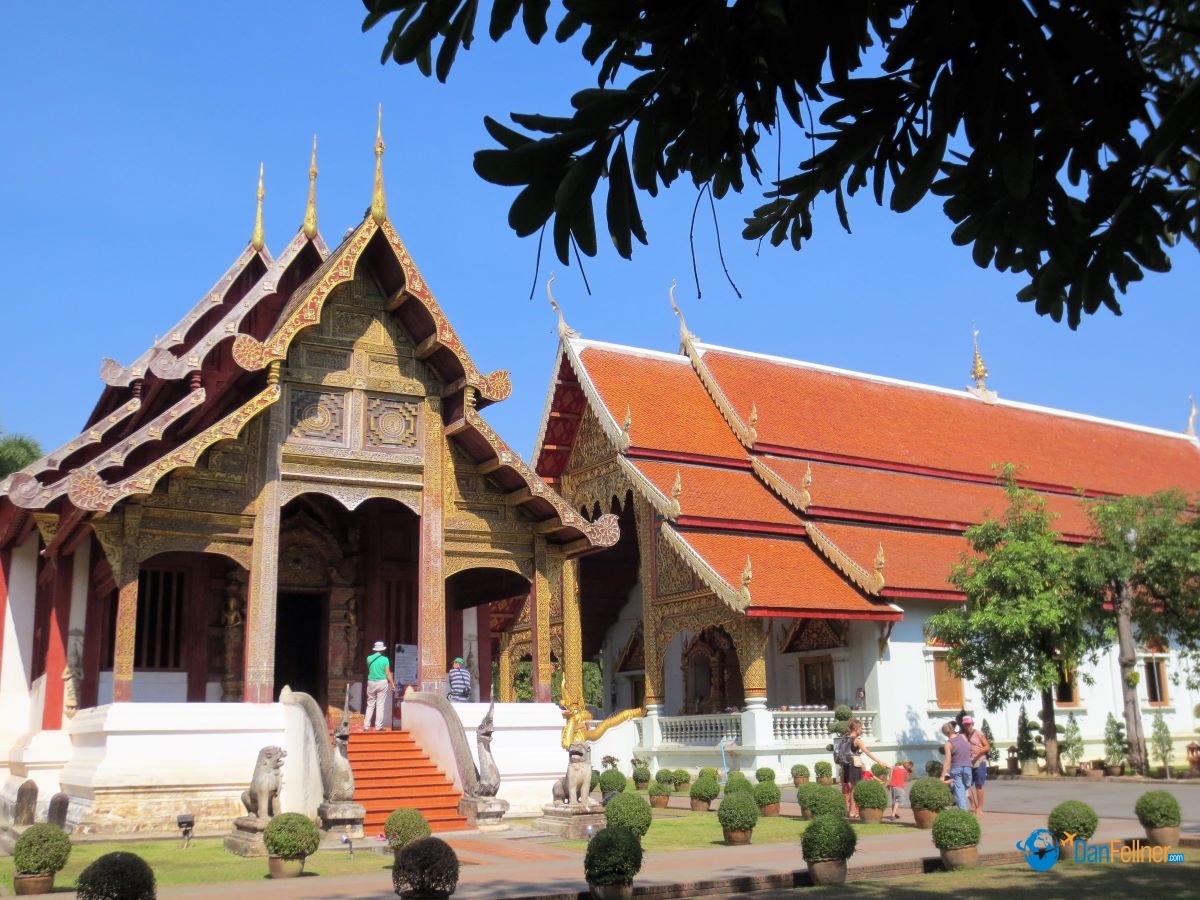
Wat Phra Singh is a Buddhist temple in Chiang Mai.
The Lindleys pay 13,000 baht a month (about $360) to rent a centrally located two-bedroom condo. She says that the cost of living is 30-40 percent cheaper than back home.
“You can live a very frugal lifestyle here and still have fun,” she says.
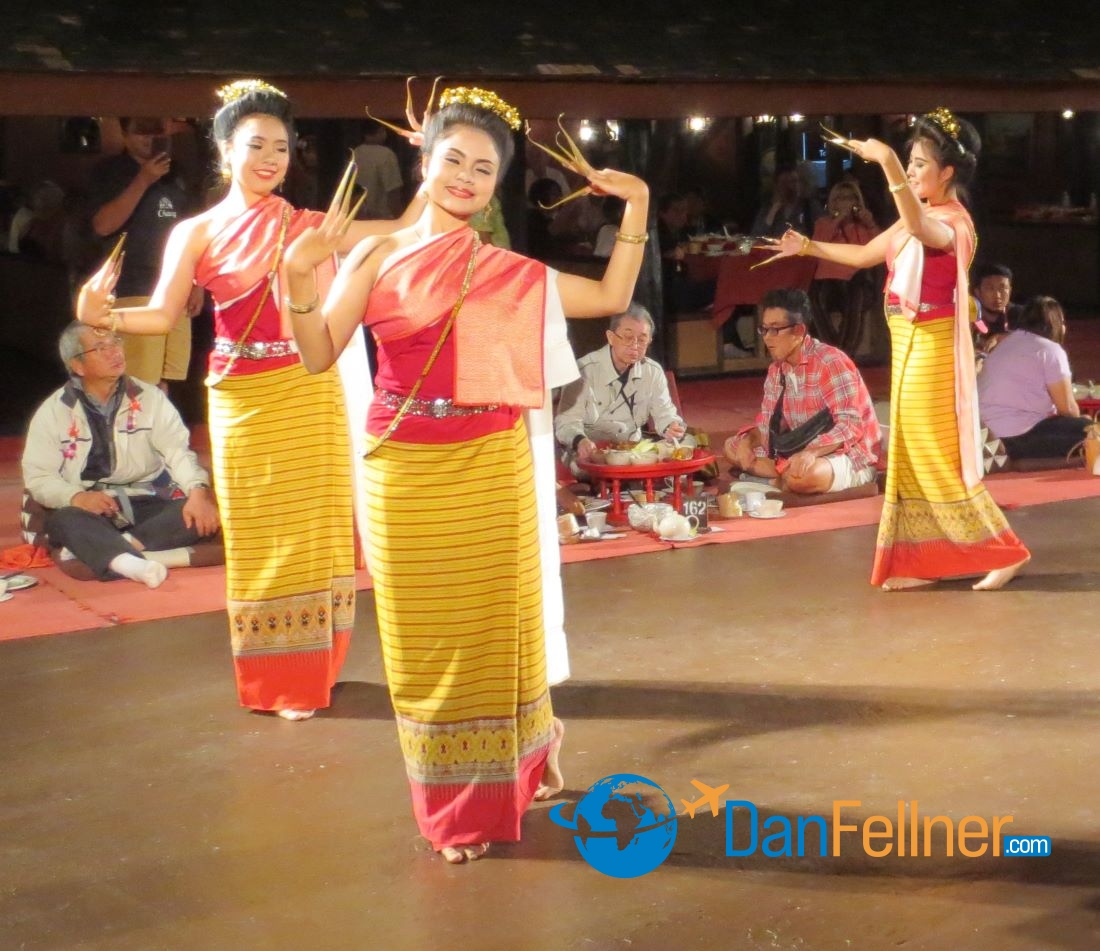
A dance performance at the Chiang Mai Cultural Center.
Not everything about Chiang Mai is ideal. It can be loud, clogged with traffic and is one of the least-pedestrian friendly cities I’ve visited. There are few bike paths downtown and it’s tricky to find a safe place to jog, a necessity to ensure that the daily portions of Thai sticky rice I consume don’t stick to my belly. I run a route that takes me back-and-forth across two bridges spanning the Ping River, but constantly must dodge motorbikes and street vendors on poorly maintained sidewalks.

The Queen Sirikit Botanic Garden in Chiang Mai.
When the time comes a few years from now, I don’t know if I’ll end up retiring permanently in Chiang Mai. Based on the experience I’ve had during my first month here, it’s definitely earned strong consideration.
But I do know that – at least for now — it sure makes a nice home away from home.
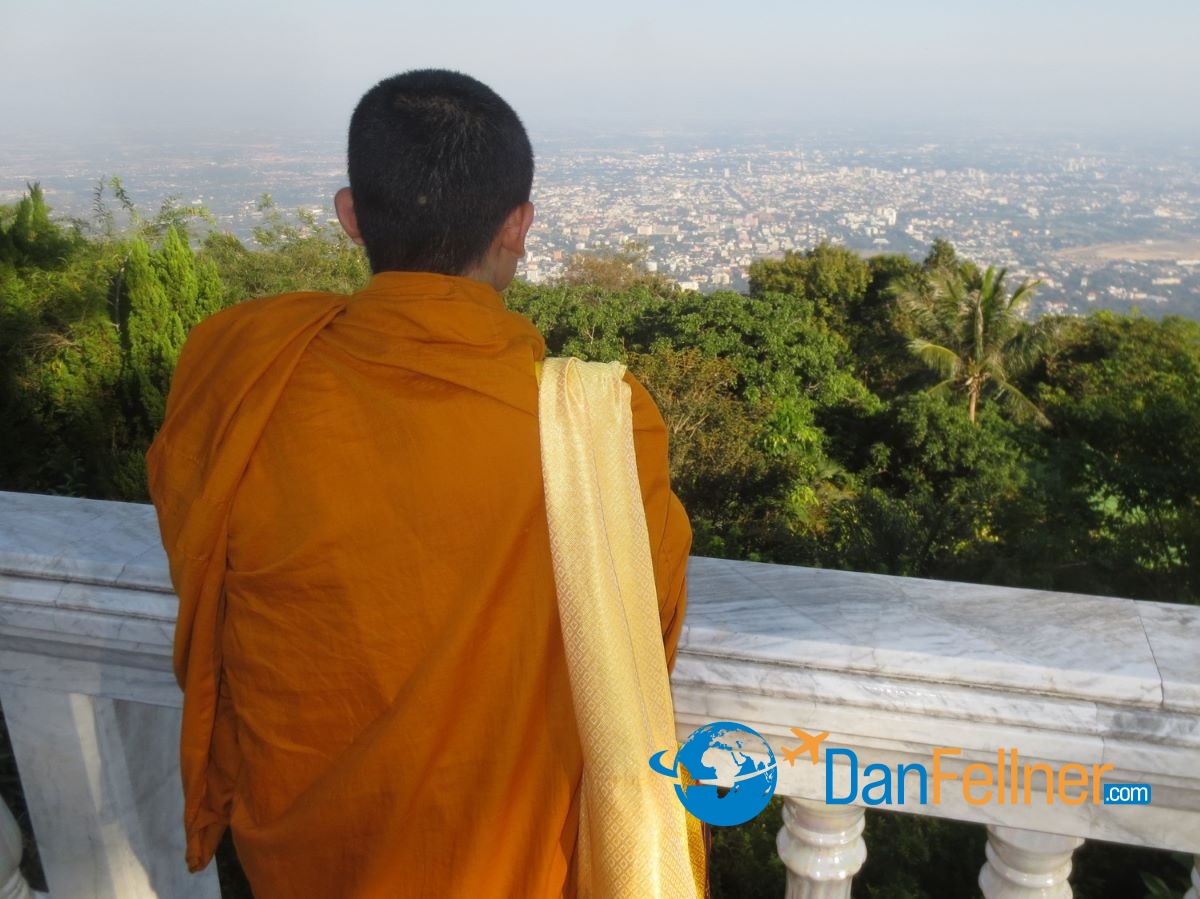
A Buddhist monk takes in the view of Chiang Mai from Wat Phra That Doi Suthep.
© 2016 Dan Fellner

